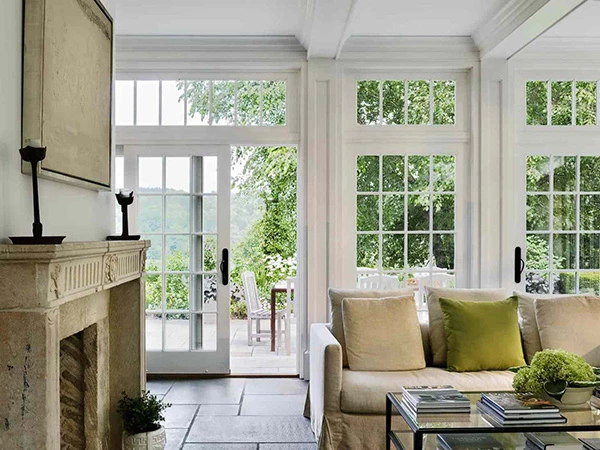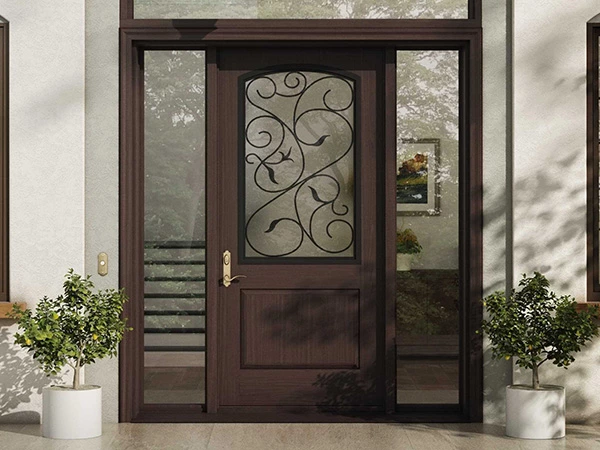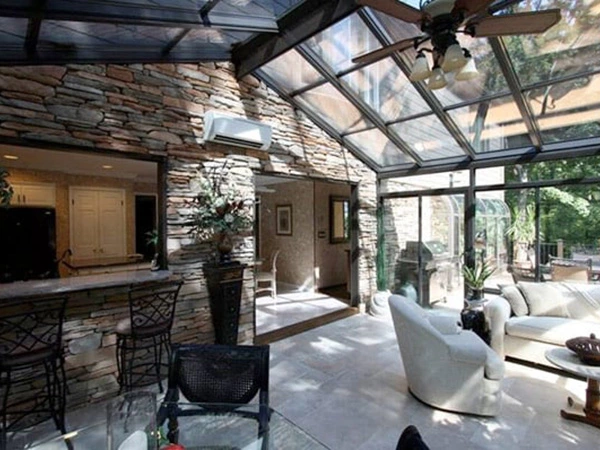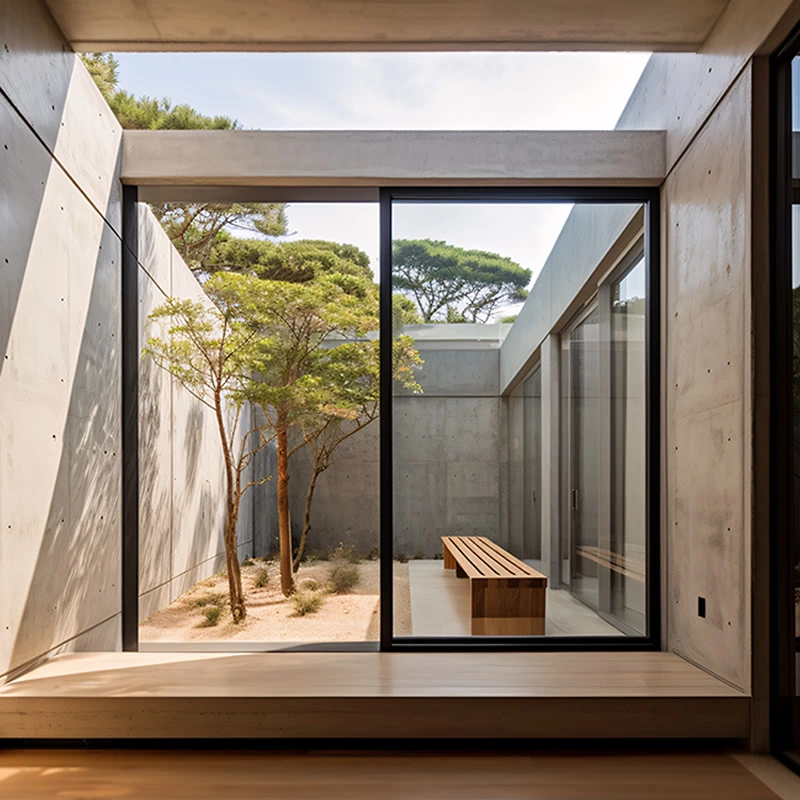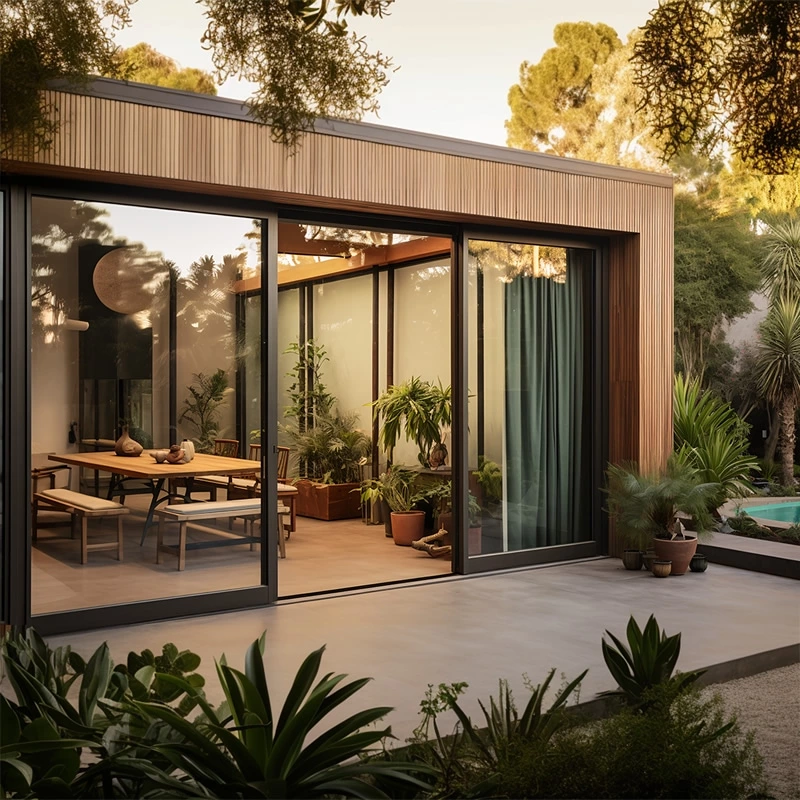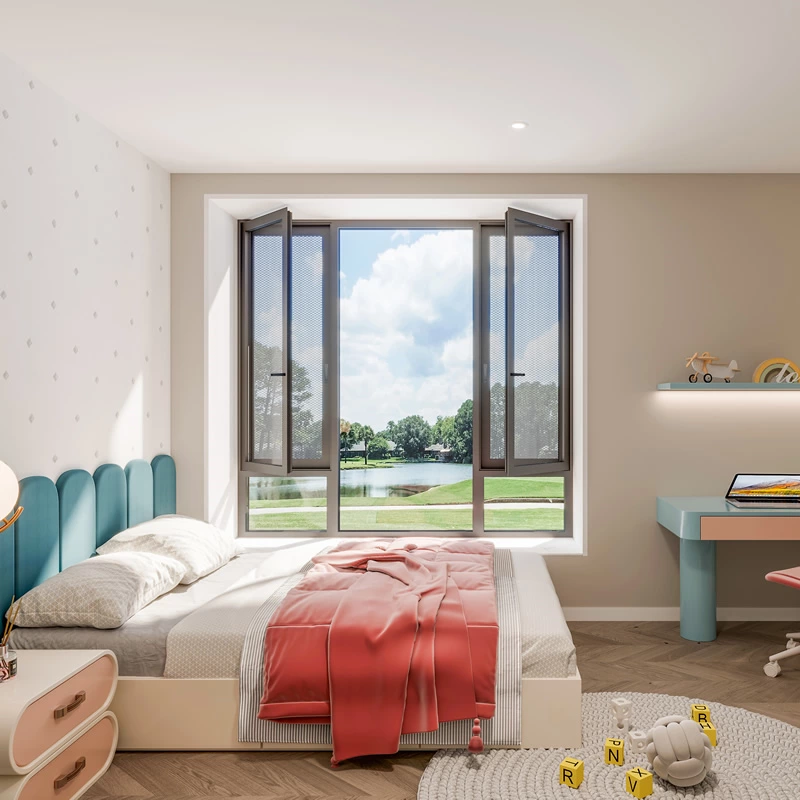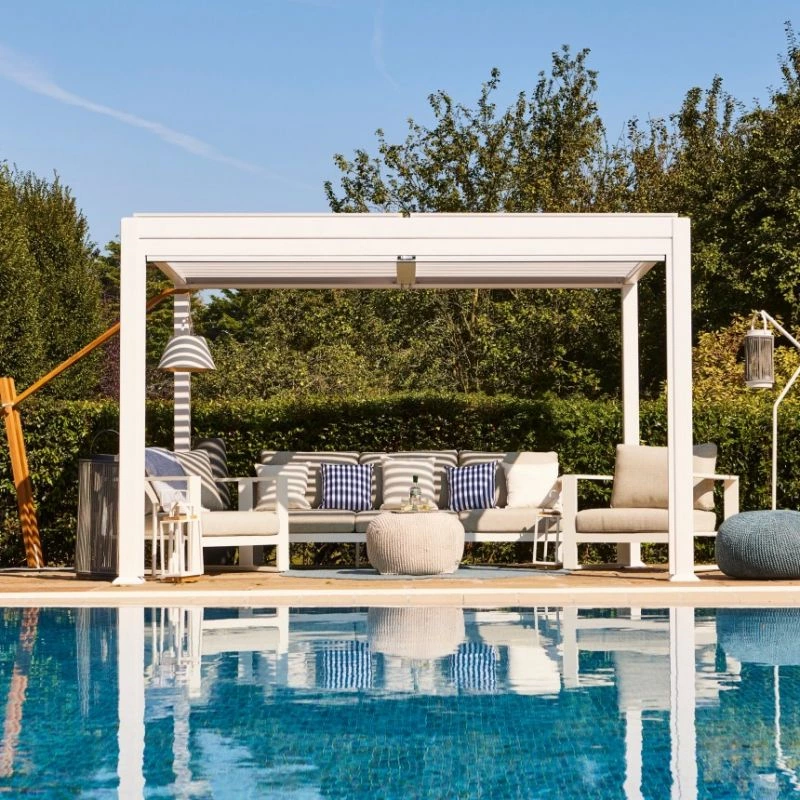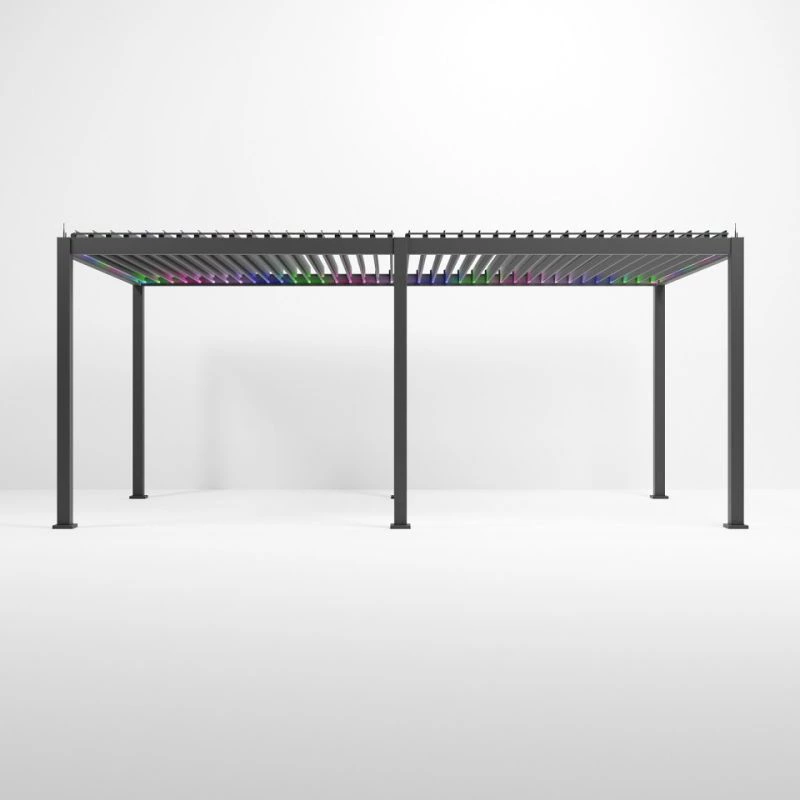In densely populated urban environments, a sunroom serves as an ideal bridge connecting nature with daily life. Whether it's basking in warm sunlight during winter or quietly observing raindrops in the monsoon season, a well-designed sunroom invariably adds boundless poetry to your life. Faced with a dazzling array of styles, have you ever felt overwhelmed? This article will systematically outline the mainstream sunroom styles to help you pinpoint your ideal choice!
1. Classification by Roof Shape (Most Common)
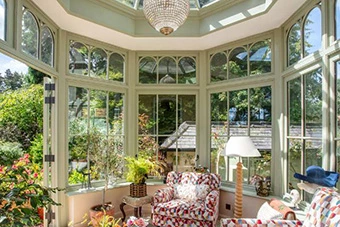
(1)Victoria-Style Sunroom (Pointed Roof Sunroom)
- Characteristics: Features a signature multi-faceted pointed roof (typically 3 or 5 facets), with elegant, flowing lines exuding classical romance and strong three-dimensional form.
- Advantages: Classic and aesthetically pleasing appearance; excellent drainage performance; tall, open interior space creating a more spacious feel visually. The pointed roof facilitates the natural runoff of rainwater and snow.
- Ideal Applications: Suited for those seeking classic European style; ideal for villas, detached houses connecting to a side wall or rear garden; particularly suitable as a central family leisure area or scenic space.
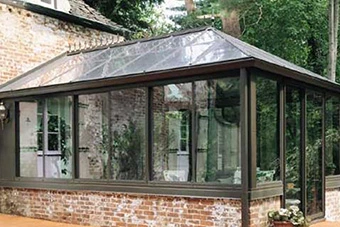
(2)Georgian-Style Sunroom (Flat Roof / Lean-to Roof Sunroom)
- Characteristics: Roof lines are simple and modern, typically featuring a single sloping surface (gable roof) or a very shallow pitch, resulting in a clean, angular overall shape.
- Advantages: Structure is simple and imposing, seamlessly blending with modern architectural styles; relatively economical and practical to build. High interior space utilization; allows for installation of large skylights on the roof.
- Ideal Applications: Modern minimalist-style homes; apartment balcony conversions; environments requiring maximized space utilization; flat roof design also facilitates installation of equipment like solar panels.
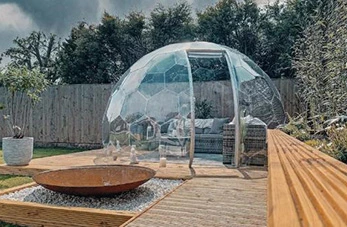
(3)Domed Sunroom
- Characteristics: Roof employs an arched or spherical design, offering a unique shape imbued with artistic flair and a futuristic feel.
- Advantages: Highly visually impactful and distinctive; typically features pillar-free or minimal-pillar interior, creating a fluid, unobstructed space; provides even, soft natural lighting.
- Ideal Applications: Gardens seeking a personalized focal point; junctions with special building structures; commercial spaces or high-end residences requiring a unique ambiance.
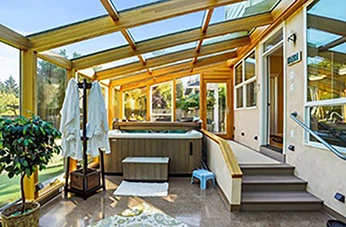
(4)Combination Roof Sunroom
- Characteristics: Innovatively combines elements like pointed roofs, lean-to roofs, and flat roofs to form more complex roof structures.
- Advantages: Highly flexible and adaptable design; can better accommodate specific site conditions or achieve particular architectural aesthetic goals.
- Ideal Applications: Large-scale sunroom projects; connections to irregular building boundaries; homeowners pursuing a truly unique design.
2. Classification by Connection to Main Building
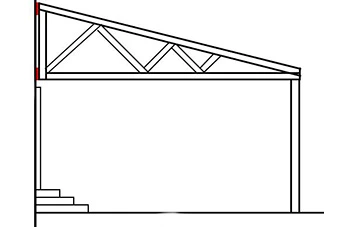
(1)Lean-to / Mono-Pitched Attached
- Characteristics: Roof slopes downwards and outwards from one side of the main building's wall; this is the most basic and economical connection method.
- Advantages: Simple structure, lower cost, easy construction, direct drainage.
- Ideal Applications: Budget-conscious projects; small space extensions (e.g., small rear door platforms); practical needs where high aesthetics are not paramount.

(2)Gabled / Dual-Pitched Semi-Detached
- Characteristics: Features two symmetrical or asymmetrical sloping roof surfaces, connecting to the main building at the gable end, presenting a more complete form.
- Advantages: Superior structural stability and drainage performance compared to the lean-to style; more regular interior space; more imposing appearance.
- Ideal Applications: Medium-sized sunrooms; projects seeking better structural performance and appearance; commonly used for side-wall connections.
(3)Freestanding Sunroom
- Characteristics: Does not share walls with the main building; supported independently on all four (or three) sides, typically situated within the garden.
- Advantages: Flexible location choice; serves as an independent landscape feature and activity space within the garden; excellent natural lighting and ventilation (windows possible on all sides); offers relatively better privacy.
- Ideal Applications: Homes with larger gardens; requiring a completely separate leisure, guest reception, studio, or greenhouse space.
3. Classification by Primary Function
(1)Leisure and Entertainment Sunroom
- Characteristics: Spacious and comfortable, emphasizing natural light and scenic views. Furnishings typically include sofas, coffee tables, and lounge chairs, focusing on relaxation and socialization.
- Design Considerations: Large expanses of glass; effective ventilation system; comfortable shading solutions (e.g., electric roof blinds); potential inclusion of audio or AV equipment.
(2)Garden Conservatory Sunroom
- Characteristics: Primarily fulfills planting needs, creating a warm, humid microclimate.
- Design Considerations: Good thermal insulation performance (especially the roof); ventilation is critical (side vents, skylights, electric opening vents); provision for planting benches/racks and irrigation systems; flooring needs to be waterproof and easy to clean.
(3)Study or Studio Sunroom
- Characteristics: Requires a quiet and focused environment, balancing ample light with glare prevention.
- Design Considerations: Incorporate shading and privacy solutions (e.g., adjustable blinds, sheer curtains); position desks to avoid direct sunlight on screens; include storage space planning; ensure good sound insulation.
(4)Dining or Kitchen Sunroom
- Characteristics: Integrates dining or simple kitchen functions within the sunroom.
- Design Considerations: Flooring must be easy to clean and slip-resistant; effective exhaust and ventilation systems; select furniture materials resistant to sunlight and stains; plan for water and electrical supply lines in advance.
Key Factors to Consider When Choosing a Sunroom Style
-
Architectural Style Compatibility: The sunroom should harmonize with the style of your main house (Classical, Modern, Rustic, etc.).
-
Budget Constraints: Costs vary significantly based on structural complexity and materials (Aluminum, Thermal Break Aluminum, Steel Structure, Glass Type).
-
Available Space and Location: Connection point (side wall, rear wall, corner), available area, and orientation (impacting light and temperature) are crucial.
-
Primary Functional Need: Clearly defining the core purpose (leisure, planting, work, dining) guides the design.
-
Local Climate Conditions: Consider sunlight intensity, wind load, rain/snow load, and thermal insulation requirements (priority on insulation in the North, ventilation/shading in the South).
-
Regulatory Restrictions: Investigate local planning permissions and building regulations regarding sunroom construction beforehand.
Optimizing Your Choice: Practical Recommendations
-
Orientation Analysis: South-facing offers maximum sunlight but high summer overheating risk, requiring strong shading; North-facing provides stable, softer light; East-facing enjoys morning sun; West-facing experiences intense afternoon sun exposure.
-
Material Selection: Thermal break aluminum profiles, due to their high strength, corrosion resistance, excellent thermal insulation, and ease of fabrication into various shapes, have become the mainstream framework choice for modern sunrooms.
-
Glass Configuration: Standard is double-glazed tempered glass (e.g., 5+12A+5). Opt for Low-E glass for enhanced insulation; consider laminated or coated glass for sun protection; choose laminated glass for safety-critical areas.
-
Ventilation System: Combined ventilation is key! Ensure sufficient side-opening windows (positioned for optimal air convection) + efficient roof vents/opening skylights (hot air exhaust). Electric opening systems enhance convenience.
-
Shading Solutions: External shading (e.g., awnings) outperforms internal shading (e.g., curtains). Electric roof blinds are the preferred solution for direct overhead sunlight.
-
Professional Design & Construction: Sunrooms involve structural safety, waterproofing, load-bearing, and drainage – crucial to select a qualified, experienced, and reputable company offering comprehensive after-sales service.
Summary
From the elegant Victoria pointed roof to the minimalist Georgian flat roof, from the practical lean-to attached style to the airy garden freestanding type, sunroom styles are remarkably diverse. The core lies in precisely matching your home's conditions, functional needs, and aesthetic preferences. Understanding the characteristics and applications of different styles, combined with careful consideration of the key factors, enables informed decisions to create the ideal sunlit space that genuinely enhances your quality of life.
